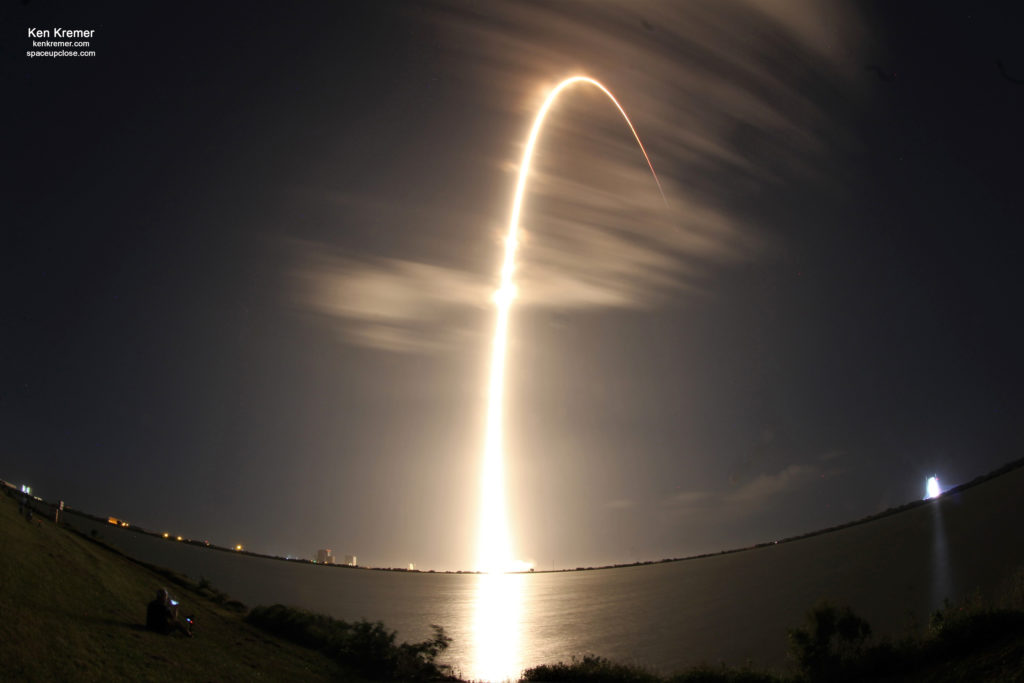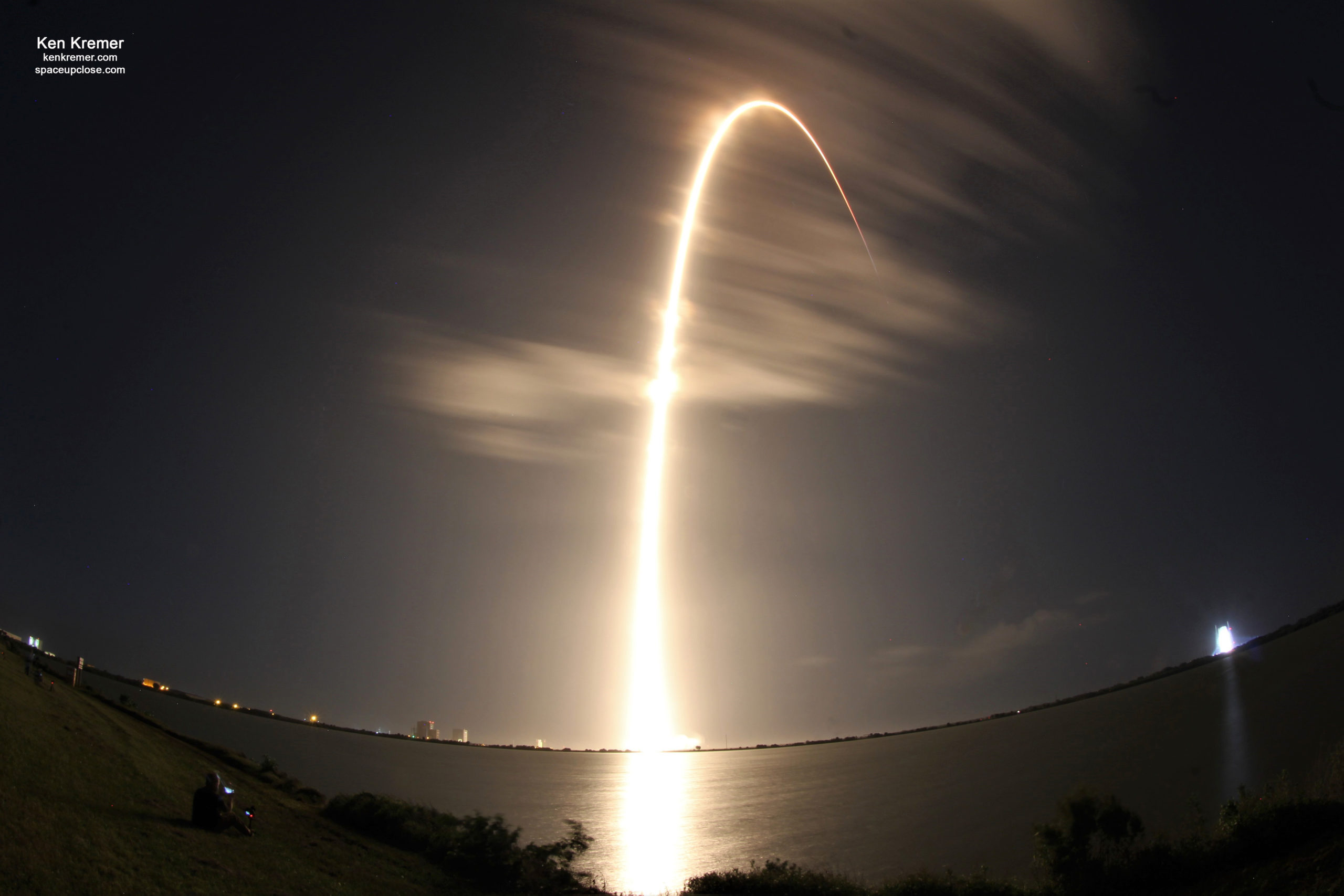
For SpaceUpClose.com & RocketSTEM
CAPE CANAVERAL AIR FORCE STATION, FL – SpaceX successfully launched the newest next generation GPS III series navigation satellite on a newly manufactured Falcon 9 rocket for the U.S. military and the Space Force to orbit Thursday evening from Florida’s Space Coast – with enhanced speed and antijamming capabilities .
The successful launch furthermore fortifies the outlook for launching NASA’s next crew of astronauts on another Falcon 9 next weekend while serving as a sort of test flight by building confidence in modifications made to the first stage engines to ensure they function properly.
The spectacular twilight liftoff of the SpaceX Falcon 9 carrying the fourth third generation series Global Positioning System (GPS) III satellite, Space Vehicle 04 (SV04) mission took place right on time at 6:24:23 p.m. EST (2324:23 GMT) Thursday, Nov. 5, from Space Launch Complex 40 at Cape Canaveral Air Force Station, Florida.
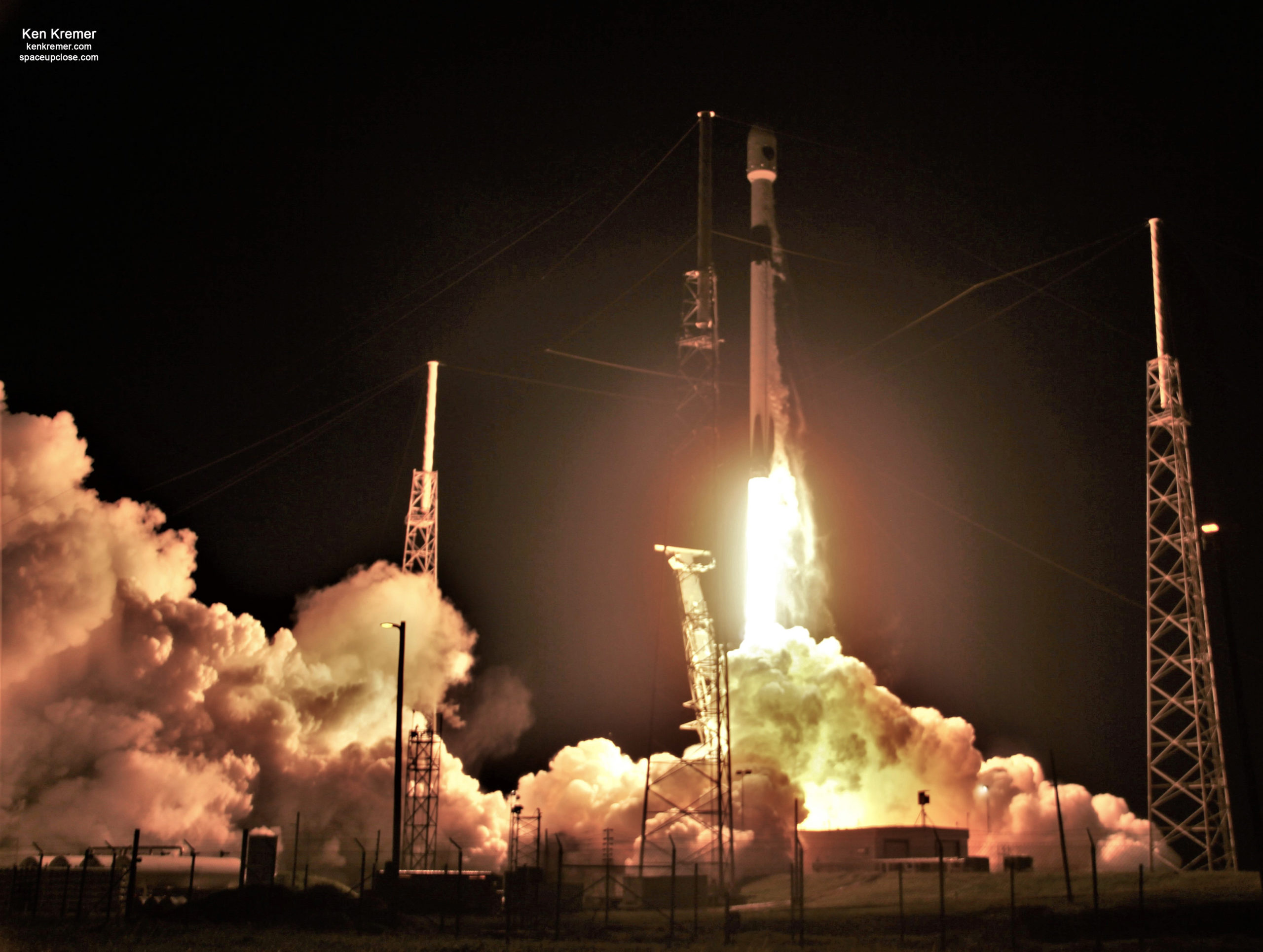
All 9 Merlin 1D first stage engines ignited to generate approx. 1.7 million pounds of liftoff thrust powered with liquid oxygen and RP-1 propellants as the 229-foot-tall (70-meter) rocket roared off pad 40 with a crackling thunder heard round the central Florida region.
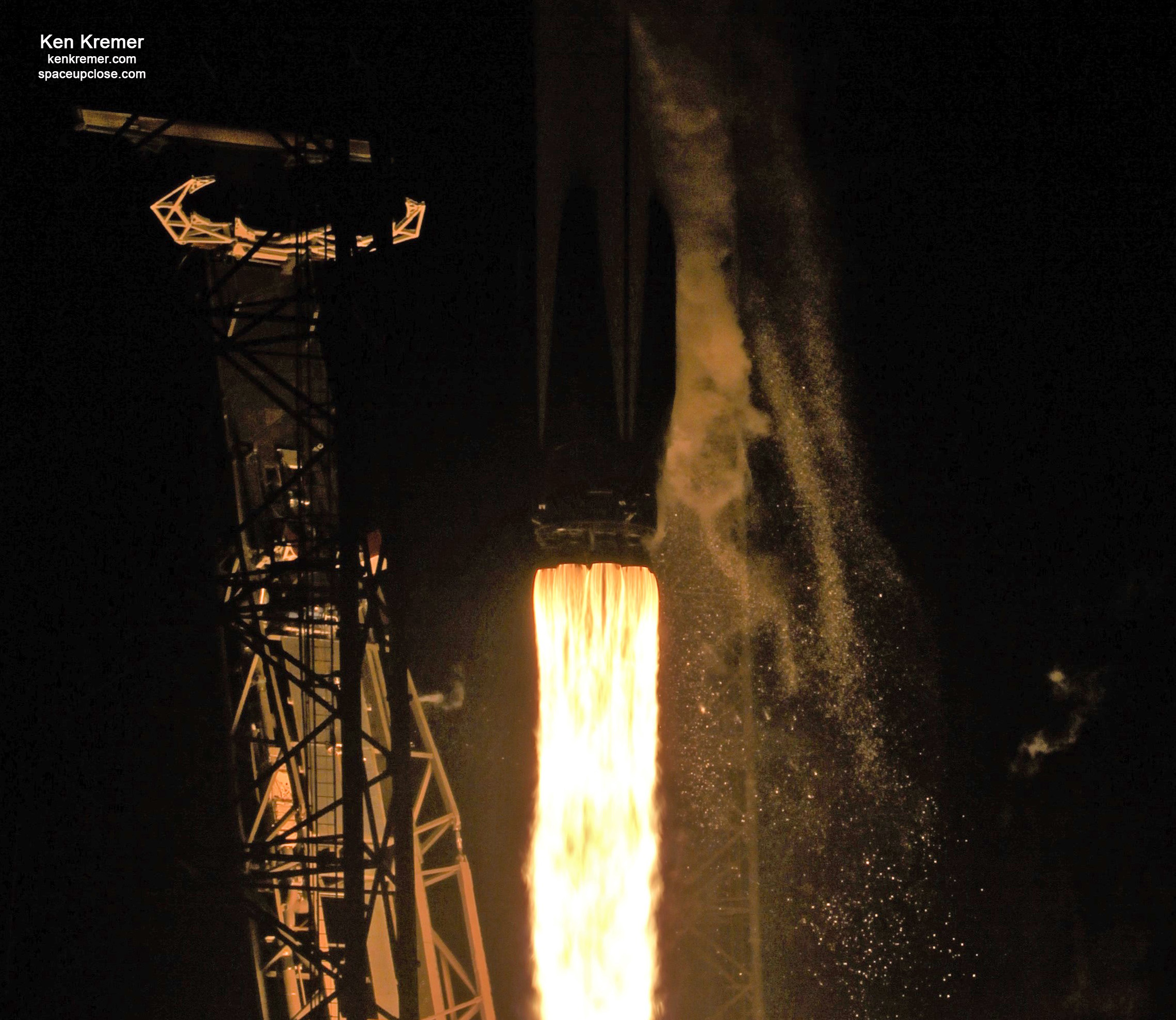
The weather was outstanding and offered spectators ringing the space coast a stunningly beautiful spectacle of the two stage Falcon 9 rocket soaring to orbit for many minutes on the eight and a half minute ride to medium Earth orbit .
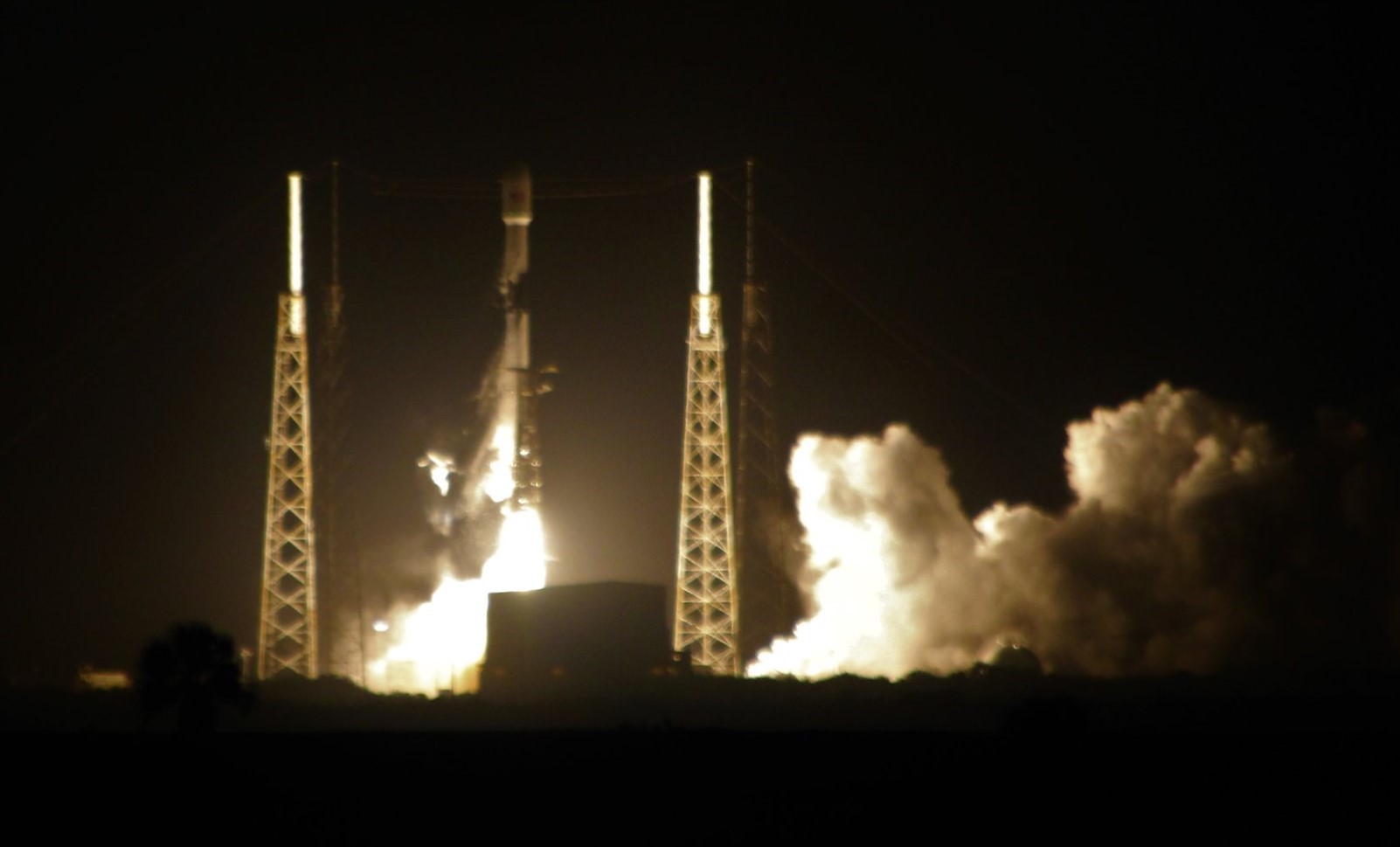
The 23 story tall Falcon 9 rocket flew northeast from the Cape tracking along the U.S. East Coast.
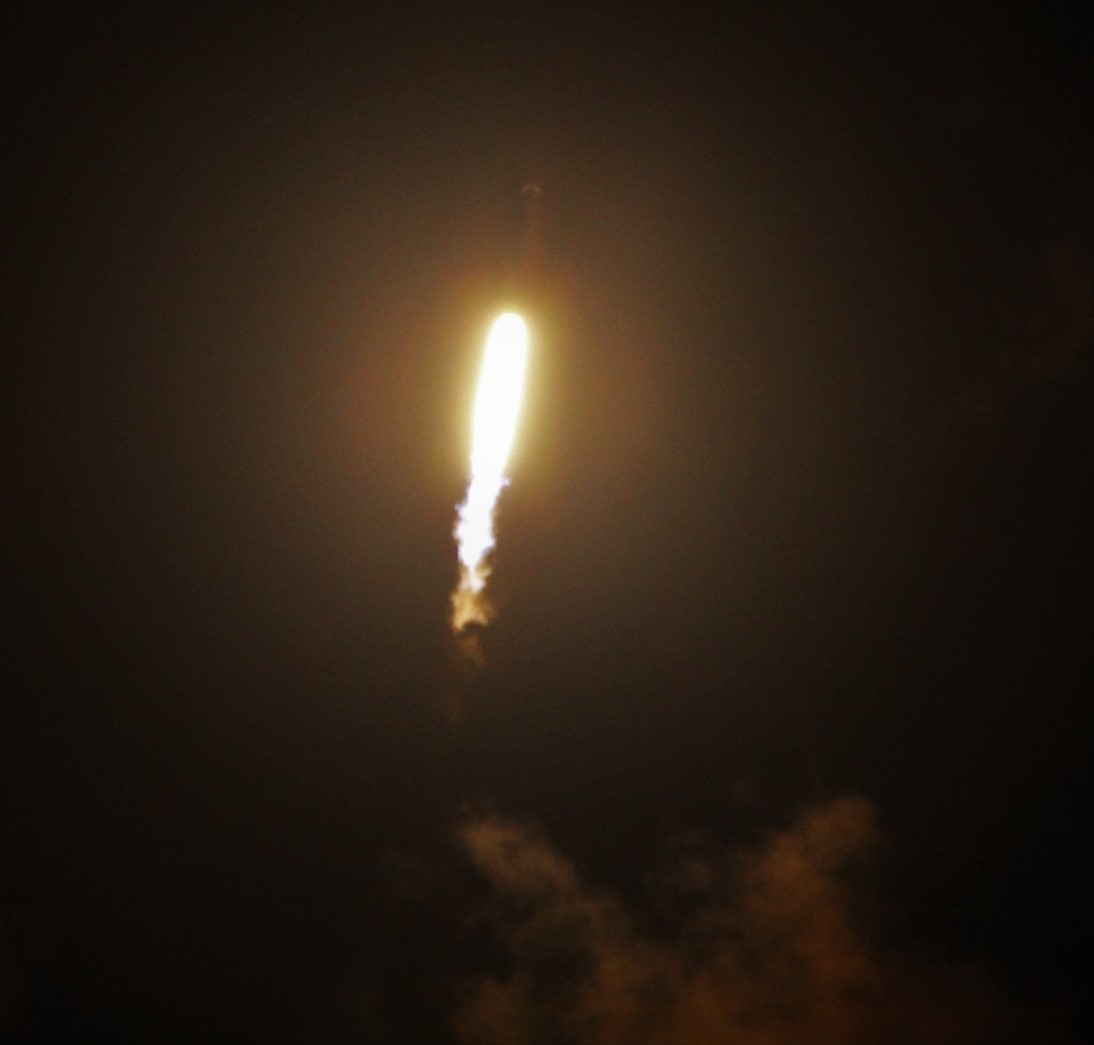
Watch this launch video from SpaceX:
Liftoff! pic.twitter.com/LI4O0TNmL8
— SpaceX (@SpaceX) November 5, 2020
Following a successful launch Thursday evening the GPS III Space Vehicle 04 (GPS III SV04) separated from the upper stage approximately 90 minutes after launch and is now using onboard power to climb to its operational orbit, approximately 12,550 miles above the Earth.
“Deployment of GPS III-4 confirmed,” SpaceX tweeted with video:
Deployment of GPS III-4 confirmed pic.twitter.com/fCFJRcWMti
— SpaceX (@SpaceX) November 6, 2020
Eight and a half minutes after liftoff SpaceX also successfully landed the first stage on an ocean going droneship for eventual reuse.
“Falcon 9’s first stage lands on the Of Course I Still Love You droneship,” SpaceX tweeted with video:
Falcon 9’s first stage lands on the Of Course I Still Love You droneship pic.twitter.com/hd0IBPX3T5
— SpaceX (@SpaceX) November 5, 2020
Enjoy our Space UpClose photos of the launch from Ken Kremer and Jean Wright.
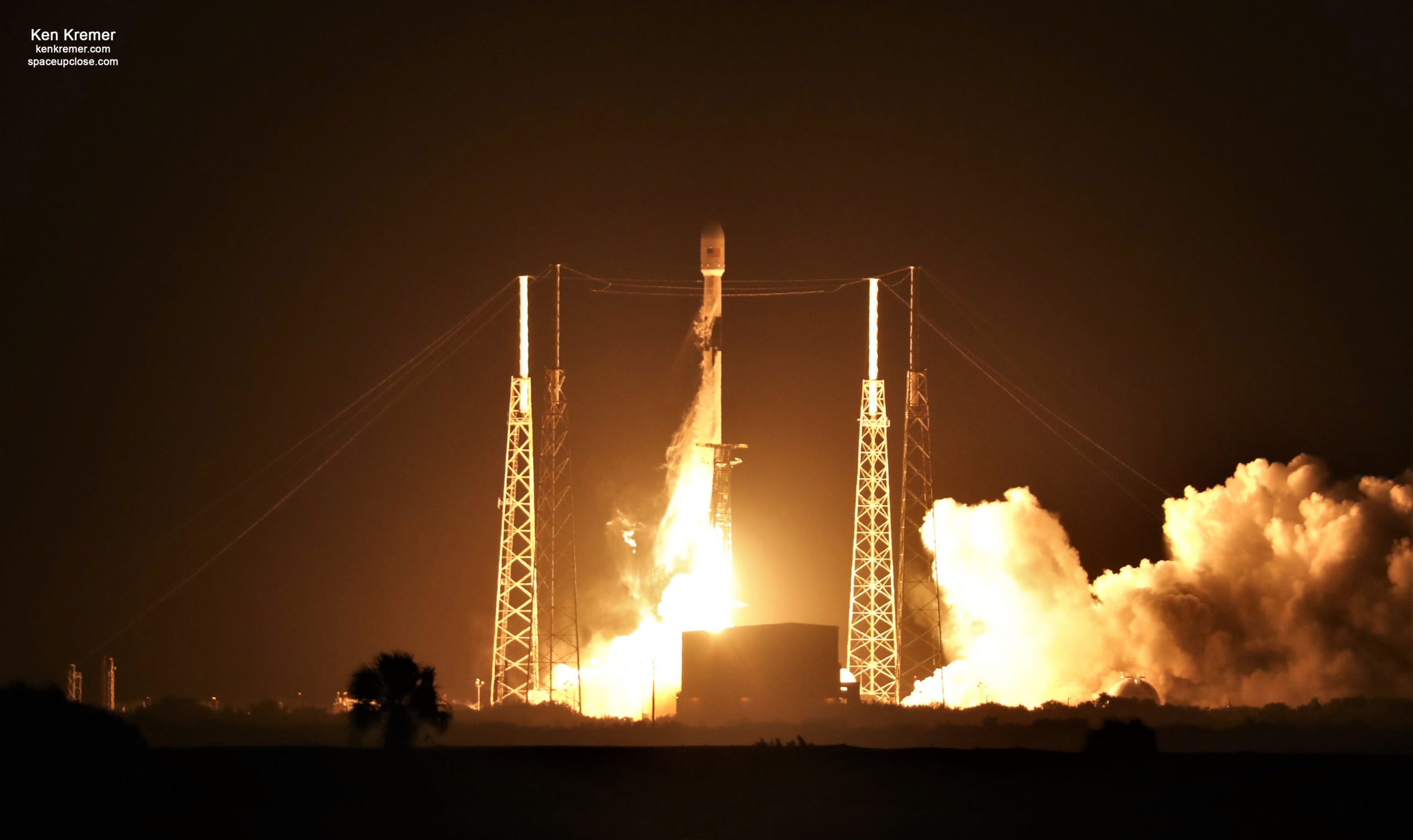
Lockheed Martin is the prime contractor for the GPS III series Space Vehicle 04 (GPS III SV04) for the U.S. Space Force, Space and Missile Systems Center (SMC) and its mission partners.
Engineers and operators at Lockheed Martin’s Waterton Facility will now begin on-orbit checkout and tests, which are estimated to complete in approximately one month. Operational use is expected to begin in a few months.
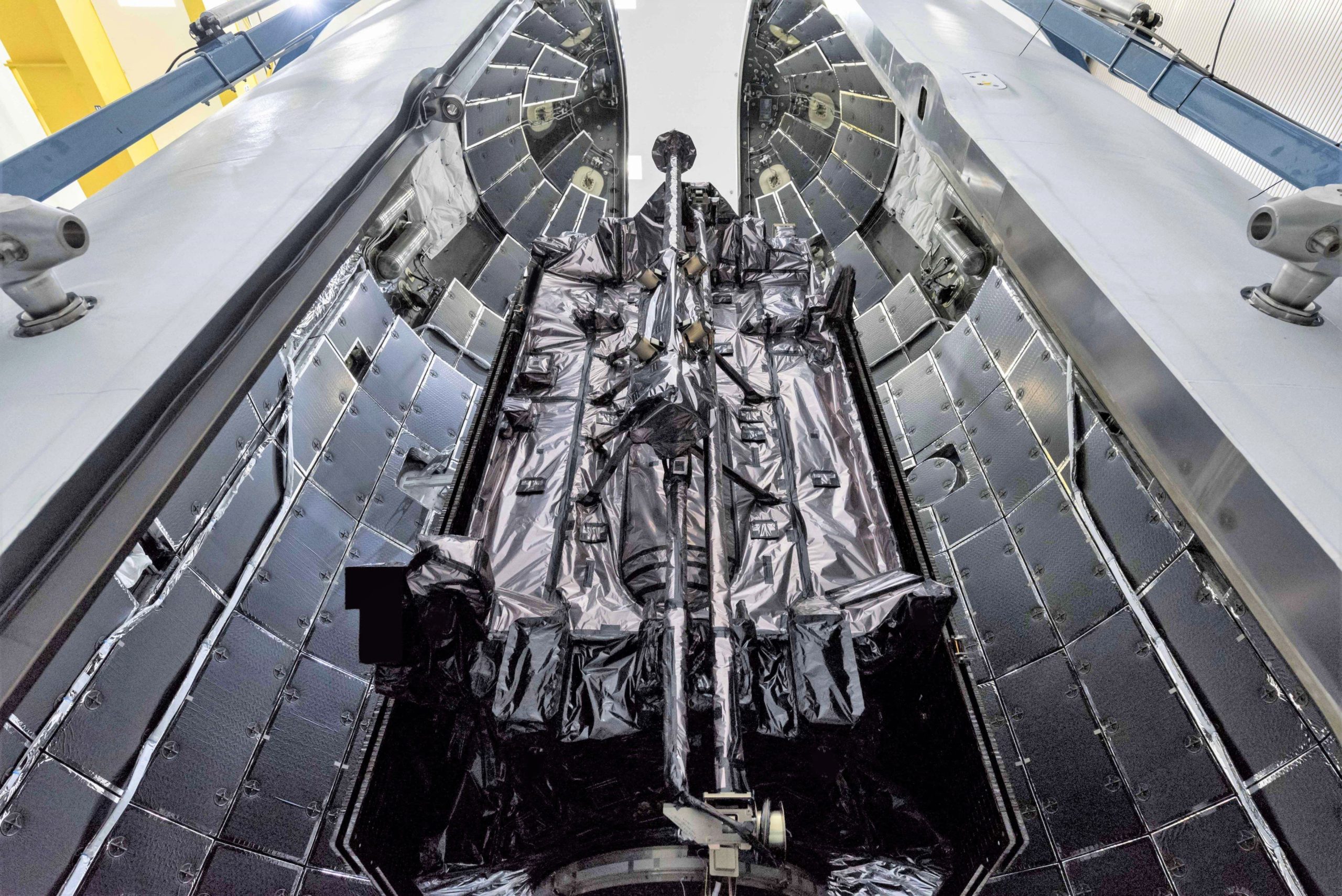
“The launch of GPS III SV04 is a testament to SMC’s ability to rapidly and safely deliver new capabilities on orbit,” said Cordell DeLaPena, Air Force program executive officer for SMC’s Space Production Corps, in a statement.
“At SMC, we are proud to deliver our fourth GPS III satellite and will continue to operate at an accelerated pace to enhance the capabilities of the billions of users worldwide.”
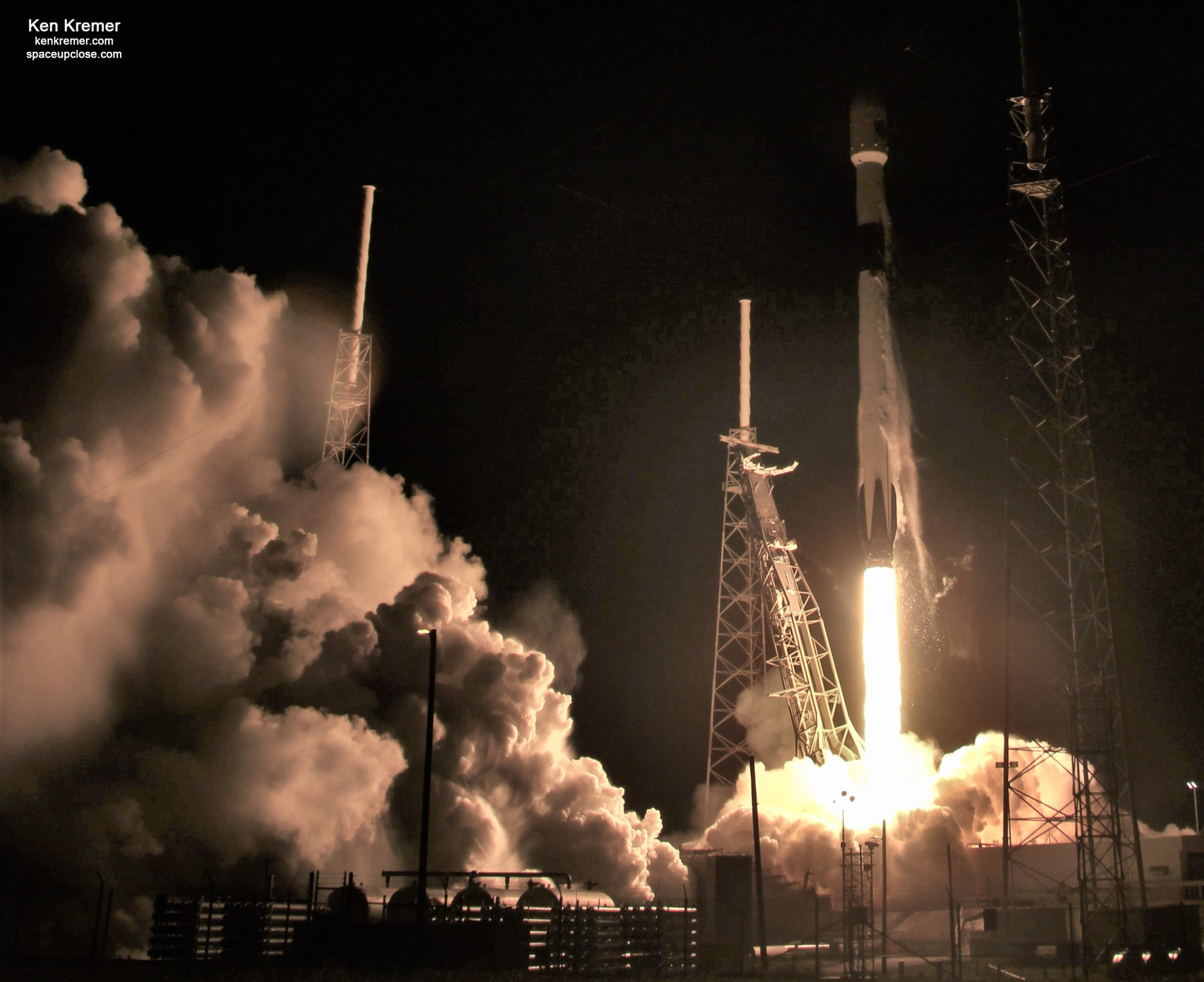
GPS serves a broad array of both civilian and military functions.
“GPS III SV04 will join the current 31-satellite operational constellation to continue to provide the gold standard in positioning, navigation, and timing services for more than four billion users worldwide,” says the U.S. Space and Missile Command.
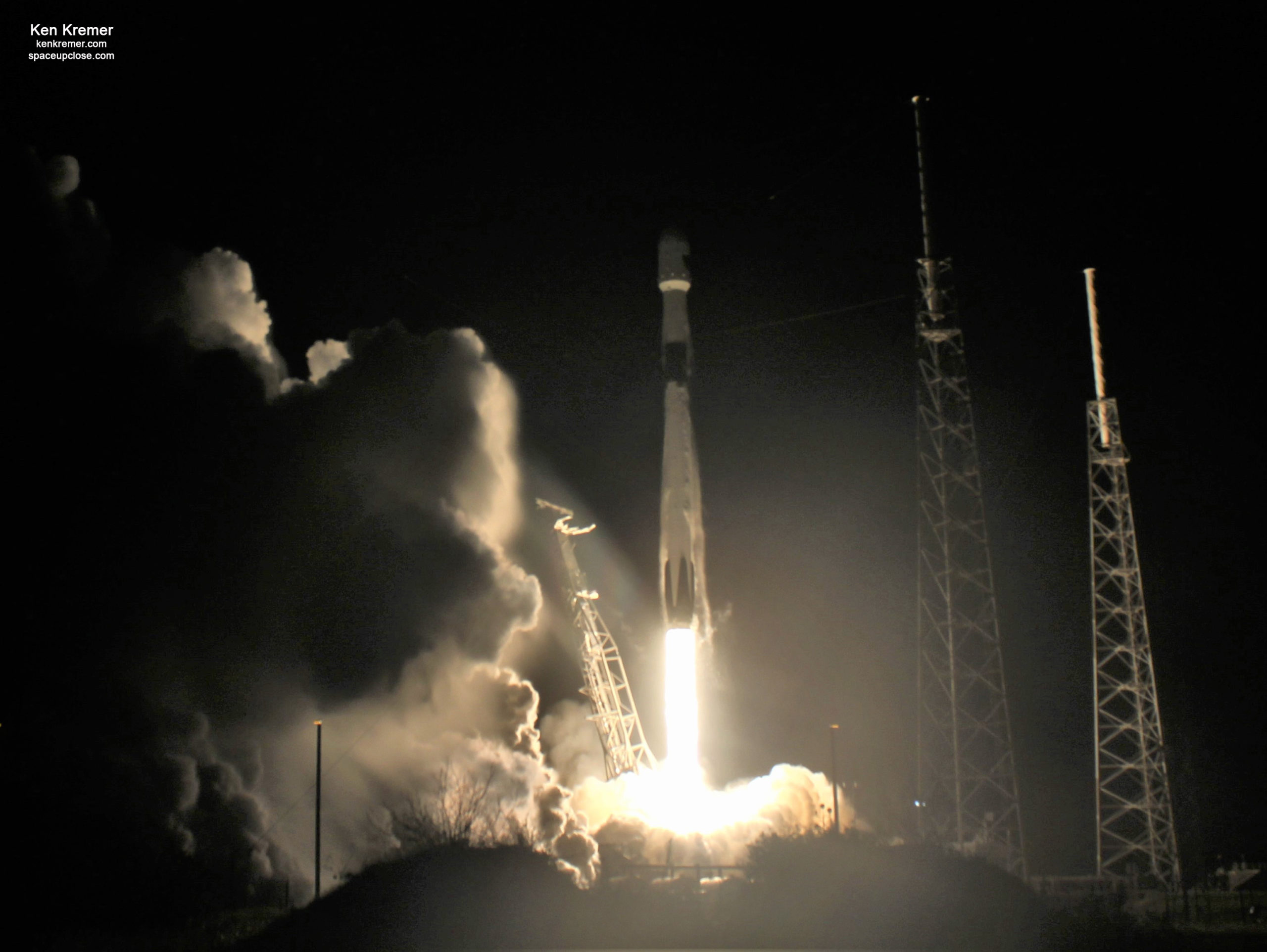
GPS III SV 04 has three times more accuracy and up to eight times improved anti-jamming capability vs the currently orbiting GPS constellation in the earlier GPS II series. A vast improvement for both military and civilian users of GPS.
“I’m proud of my team’s 83rd successful National Security Space Launch and look forward to our future missions with SpaceX,” said Col. Robert Bongiovi, SMC’s Launch Enterprise director.
“Ultimately, our ability to embrace innovation with our launch providers advances warfighter’s capabilities while lowering costs to the U.S. Government and its taxpayers.”
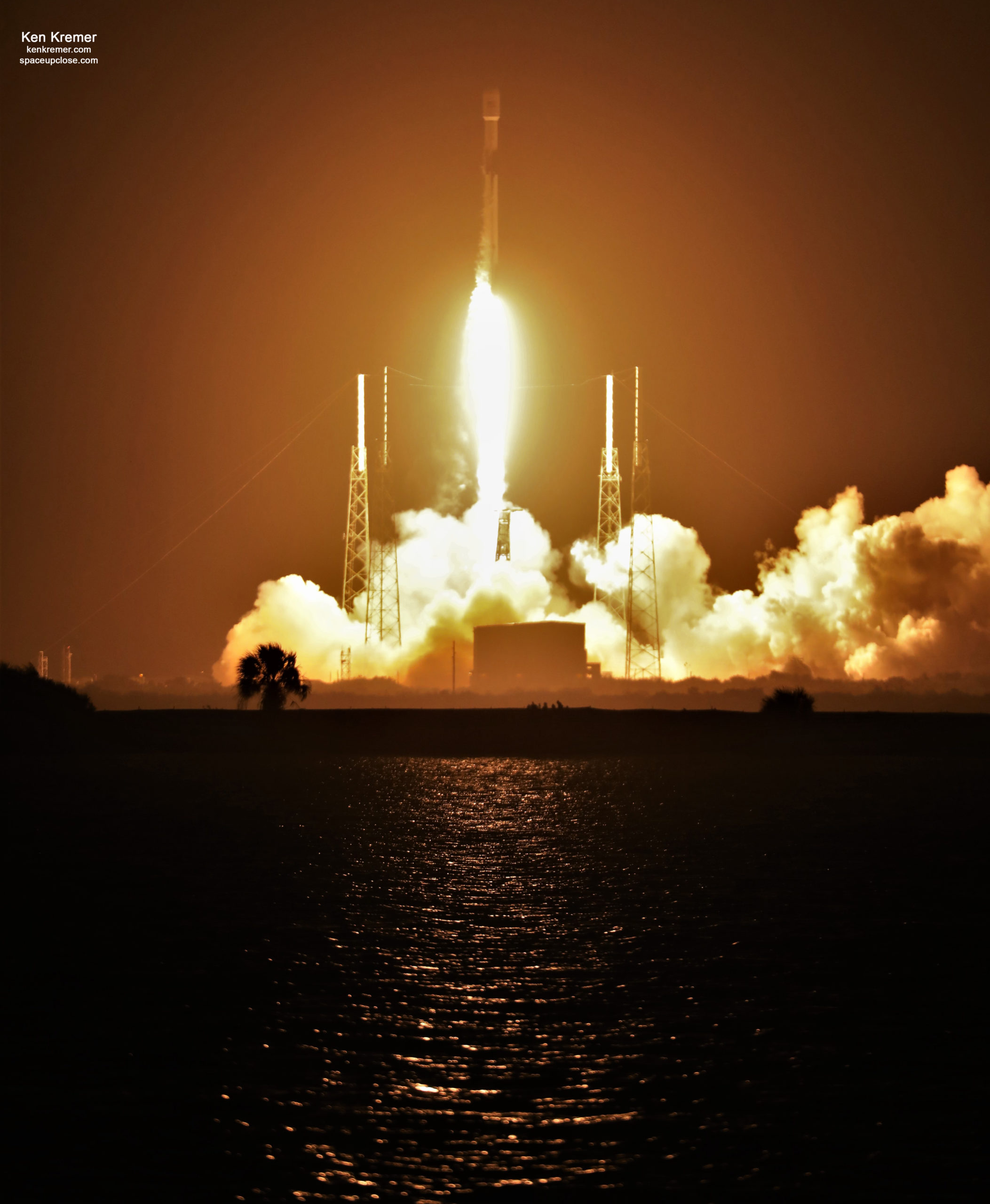
GPS III SV04 will also be the 23rd Military Code (M-Code) signal-enabled GPS space vehicle on orbit, continuing the Space Force’s plan to fully field the more-secure, harder-to-jam and spoof GPS signal for military forces, according to Lockheed Martin.
“With GPS III we are focused on rapidly fielding the best capabilities to the Space Force’s Positioning, Navigation and Timing (PNT) Mission,” said Tonya Ladwig, Lockheed Martin’s Acting Vice President for Navigation Systems. “We are proud of our industry-government team on the launch of GPS III SV04. GPS III SV05 is already ‘available for launch’ and just waiting to be called up.”
This Falcon 9 GPS satellite launch finally took place after multiple delays.
The prior liftoff attempt by SpaceX on Oct. 2 was suddenly and unexpectedly automatically aborted at T Minus 2 seconds during the terminal countdown and live broadcast and came on the heels of repeated launch scrubs and postponements for both technical and weather issues last 2 months by both SpaceX and ULA.
Following the launch abort SpaceX engineers replaced one of the Merlin 9 engines after the root cause was identified as a ‘hard start’ related to lacquer not completed washed out during prelaunch engine processing, SpaceX VP Hans Koenigsmann said at a media briefing.
Military leaders announced that the U.S. Space Force will now permit use of ‘flight-proven’ Falcon 9 rocket for military launches following a thorough evaluation and verification of all rocket systems with SpaceX.
This 1st stage GPS booster was recovered on the sea going droneship Of Course I Still Love You for return to Port Canaveral
It will be reflown on the next GPS III launch of the SV05 satellite next summer, Dr Walter Lauderdale of the Space and Missile Systems directorate told me during a Sept. 25, 2020 media briefing.
The @SpaceForceDoD @AFSMC announced an agreement with SpaceX in September to launch future National Security Space Launch (NSSL) missions on flight-proven rocket boosters https://t.co/ZkReX4jBob
— SpaceX (@SpaceX) November 5, 2020
My prelaunch photos were featured at Fox 35 Orlando
Watch Ken’s continuing reports about GPS, Atlas V Starlink, Commercial Crew and Artemis and onsite for live reporting of upcoming and recent SpaceX and ULA launches including Demo-2, Starlink, X-37B, Solar Orbiter, Mars 2020 and more at the Kennedy Space Center and Cape Canaveral Space Force Station.
Stay tuned here for Ken’s continuing Earth and Planetary science and human spaceflight news: www.kenkremer.com –www.spaceupclose.com – twitter @ken_kremer – email: ken at kenkremer.com
Dr. Kremer is a research scientist and journalist based in the KSC area, active in outreach and interviewed regularly on TV and radio about space topics.
………….
Ken’s photos are for sale and he is available for lectures and outreach events
Please consider supporting Ken’s work by donating at Patreon:
https://www.patreon.com/kenkremer
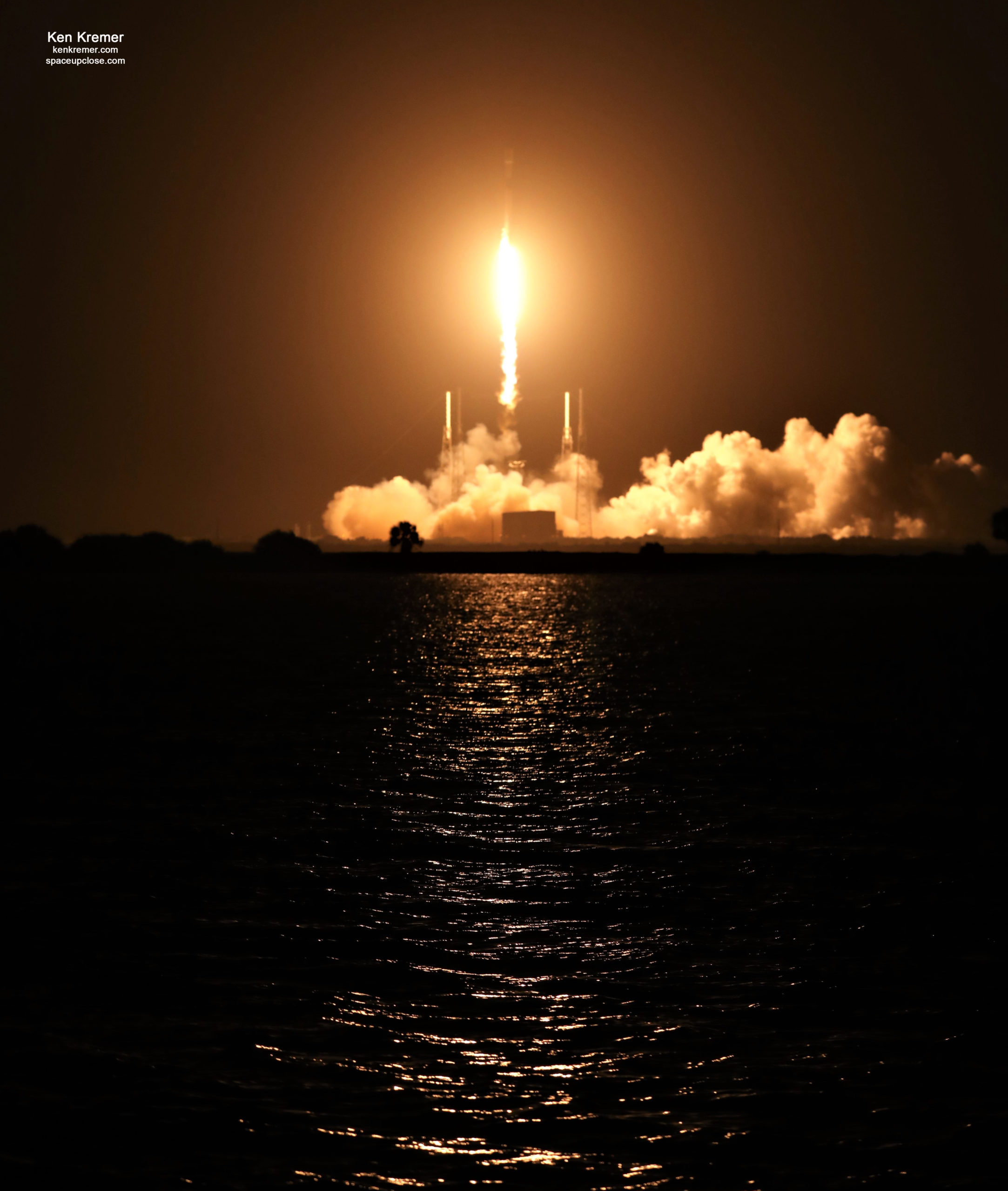
x


